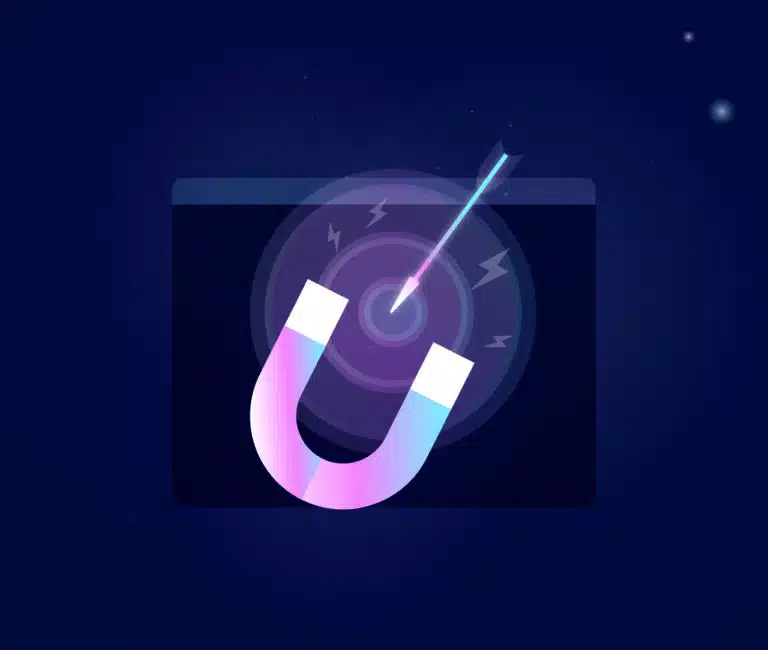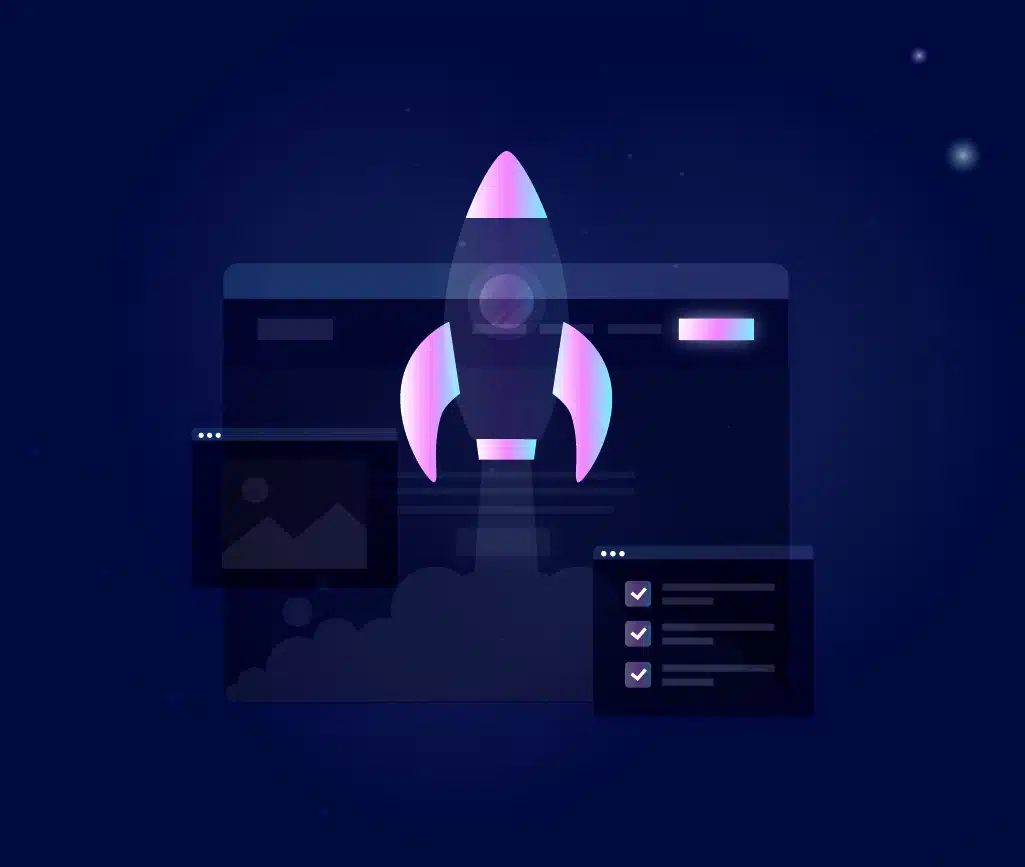Marketing And Sales
5 minute read
How To Set The Right Lead Generation Goals.
LAST UPDATED:
August 15, 2023


We talk a lot about how strategy and planning matter.
But what does that actually look like for B2B’s when they’re trying to expand their inbound lead generation efforts?
In this article, I’ll walk you through how to set up lead generation goals that actually align with business goals.
Goals that are clear, well-defined, and achievable for your business.
Ready to dive in?
Disclaimer
For the purposes of this article, we’ll be using simplified figures and a made-up company to demonstrate how all of this works. For your business, this will likely be more complex, but the approach to solving this should be the same.
AlphaX is an enterprise SaaS company focused on helping businesses improve their supply chain woes. This software, coupled with their onboarding fee averages $30,000 per deal in year one, and 90% of their customers stick around for multiple years.
Over the course of 2021, their company experienced a ton of organic growth due to emerging supply chain challenges during the pandemic. Their top-line revenue soared to $20M annually.
This growth, while increasing revenue, have also increased their overhead.
Business Goal
Looking forward to 2022, AlphaX’s CEO has set a revenue growth goal of 20% year-over-year to ensure the company remains healthy.
It’s now up to the marketing team to deliver. Where do they start?
Sales Goal
As mentioned above, AlphaX’s CEO has set a goal of 20% YoY growth.
That means their new top-line revenue at the end of 2022 should be $24M annually (a total increase of $4,000,000).
With a retention rate of 90% per year and an average of $30k per new deal, that means AlphaX will need to sign 200 new deals in 2022 to make this goal a reality.
Marketing Goal
Knowing the target revenue and deals required to get there, it’s now the marketing team’s job to figure out what this means in terms of their marketing funnel.
After looking at a collective of both their CRM and Analytics tools, they’ve uncovered the following information.
- 3% of their visitors fill out a demo form.
- 85% of those who fill out a demo form book a demo call.
- 90% of those who attend a demo call are interested in a proposal.
- 40% of proposals submitted turn into paying customers.
With this information in hand, they’re now equipped to figure out based on historical data what their marketing goals should be.
Understanding The Numbers
The goal is to acquire 200 new customers, so let’s use that to identify each stage of our funnel.
Let’s start by looking at the close rate. 40% of proposals translate into a new customer. That means AlphaX will need to send out 500 additional proposals in 2022.
Next, let’s look at the interest level after a demo is presented. 90% of people want a proposal, which means 556 additional demos will need to be booked.
Next, let’s look at how many people confirm a demo call after they fill out a form. 85% of people do that, which means 654 additional demo forms need to be submitted.
Lastly, let’s look at how many people fill out a demo form after visiting the website. 3% of people do that, which means 21,800 additional unique people need to visit the website per year.
With that information, we now have additional targets for each stage of our funnel per annum:
- Visitors: 21,800
- Demo Form Submits: 654
- Demo Presentations: 556
- Proposals Sent: 500
Monthly, we’re looking at an extra…
- Visitors: 1,816
- Demo Form Submits: 55
- Demo Presentations: 46
- Proposals Sent: 42
The 20% goal is starting to get less scary, right?
Protip
Oftentimes when running new campaigns, numbers may perform worse than historical recordings. We suggest adding a 10-15% buffer to your goals and then re-evaluating quarterly to continue to fine-tune your goals.
Ideally, in order for this approach to work, a company needs to have good tracking mechanisms in place. This means you have to have both accurate analytics and a CRM that’s kept up to date.
If you don’t have those in place within your organization, a low-cost and effective way to set this up would be subscribing to a tool like Pipedrive and making sure Google Analytics is installed on your website.
If you don’t have this data, then I’d start with figuring out the following:
- Average Deal Value
- Total Increase
- Deal Number
Next, figure out what your close rate is.
From there, you can do some research on what percentages are average for the various stages in your industry. For most B2B companies, we’ve observed the following:
- Form Submissions: 1-3%
- Booked Calls: 50-70%
- Proposals: 60-80%
- Close Rate: 20-30%
Protip
When starting a lead generation initiative many people are focused on improving their top-of-funnel metrics (visits). In reality, it’s likely easier to improve your mid-to-bottom funnel metrics (form submissions, booked calls, and close rate)
By following the steps above the marketing team was able to demystify their objectives and break things down into concrete numbers.
This provides them with a clear understanding of what needs to be accomplished, and will now allow them to ideate on how to make those numbers a reality.
If you skip this step and jump immediately into tactics, you’re setting yourself up for failure.
Math Cheat Sheet
- Total Increase = (Annual Revenue x % Increase)
- Deal Number = ((Annual Revenue x % Retention Rate) + (Total Increase) / (Average Deal Value))
- Proposals Sent = (Deal Number / % Close Rate)
- Presentations = (Proposals Sent / % Interested In Proposal)
- Form Submissions = (Presentations / % Presentations Booked)
- Visitors = (Form Submissions / % Form Conversion Rate)
- Average Deal Value = (Total Sales / Total Number of Sales)
- Close Rate = (Number of Deals Won / Number of Proposals Sent)
About Us
We are a full-service web design company specializing in full-stack web development, website redesigns, conversion optimization, and more. Here are a few of our specializations:
- Shopify web design
- WordPress web design
- HubSpot development and design
- Drupal development and design
- WooCommerce website design
- Web design for beauty brands
- Web design for small and midsized businesses
- Web design for enterprise organizations
If you have any design or development needs, don’t hesitate to contact us.
Get Memorable Insights.
Sign up to receive actionable web design advice directly in your inbox monthly.
Get Memorable Insights.
Sign up to receive actionable web design advice directly in your inbox monthly.
Author
Jeff Gapinski is the President of Huemor where he helps plan the long-term strategic growth of the agency. Jeff is passionate about UI/UX, demand generation, and digital strategy.
What Do You Think?
Have feedback? Maybe some questions? Whatever it is, we'd love to hear from you.




![Website Design Standards We Follow [That You Should Too!]](https://huemordev.b-cdn.net/wp-content/uploads/2021/12/2023.04.04.Website-Design-Standards-We-Follow-That-You-Should-Too.jpg.webp)



No comments found